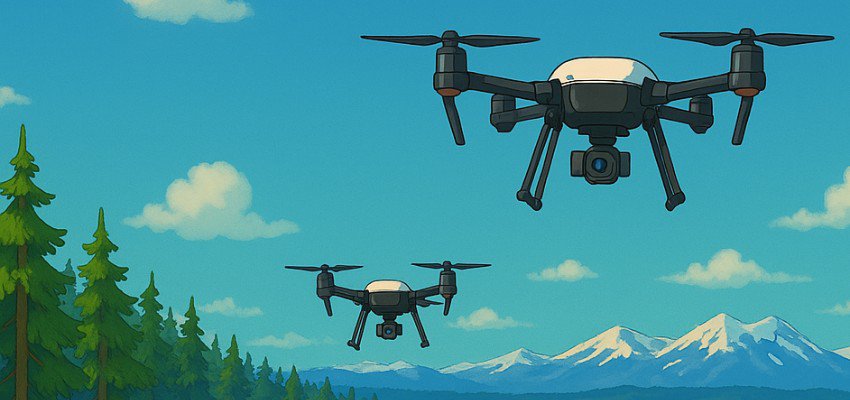Finland’s Strategic Withdrawal from the Ottawa Treaty
In a landmark policy decision announced in April 2025, Finland declared its intent to withdraw from the Ottawa Treaty, formally known as the Convention on the Prohibition of the Use, Stockpiling, Production, and Transfer of Anti-Personnel Mines and on their Destruction. Signed by 164 nations, the treaty has served as a critical humanitarian measure, drastically reducing the global use of landmines since its adoption in 1997.
Finland’s government has justified the move as a necessary recalibration of national defense strategy in light of persistent security threats posed by Russia. The withdrawal process—requiring formal parliamentary approval—will take effect six months after ratification, aligning with the treaty’s legal framework that allows member states to exit with advance notice.
This shift underscores a new defense posture that prioritizes operational readiness and territorial deterrence. It also signals broader shifts within the region, as Poland and the Baltic states—Estonia, Latvia, and Lithuania—are reassessing their own positions on the treaty in response to shared geopolitical pressures.
Defense Industry Mobilization and Technological Innovation
Among the first to react to Finland’s decision was Insta, a prominent Finnish defense and technology company with a longstanding strategic relationship with the Finnish Defence Forces. The firm has expressed interest in resuming landmine production if permitted by law, and is exploring how such capabilities might integrate with broader national security initiatives.
Insta’s expertise extends beyond traditional munitions. The company is actively developing next-generation military technologies, such as the Steel Eagle—an airborne system designed to deploy steel projectiles over wide areas using drone platforms. This innovation, co-developed with Ukrainian partners, exemplifies the shift toward more flexible, scalable, and automated defense systems in modern warfare.
While no decisions have been finalized regarding production or export, Insta’s positioning reflects a wider industry trend: a readiness to align with state-driven shifts in defense doctrine while navigating evolving regulatory and ethical landscapes.
International and Ethical Considerations
The decision to exit the Ottawa Treaty has drawn strong concern from the United Nations and international humanitarian organizations. These bodies argue that the treaty represents not just a legal standard but a moral commitment to minimizing harm to civilian populations. Abandoning it, they warn, may undermine the integrity of global disarmament efforts and increase civilian exposure in potential conflict zones.
This tension highlights the growing disconnect between humanitarian norms and the hardening of national defense policies across some NATO member states. The challenge for policymakers and defense industries lies in balancing military necessity with ethical accountability, particularly as advanced technologies blur traditional lines of engagement and responsibility.
The “Drone Wall”: A Regional Tech-Defense Collaboration
Simultaneously, Eastern European nations are advancing a high-tech initiative known as the “drone wall”—a multi-nation effort to establish a robust aerial defense system along NATO’s eastern flank. This strategic project aims to integrate drones, counter-drone technologies, sensors, and artificial intelligence into a multi-tiered defense network capable of detecting and neutralizing unmanned threats in real time.
Regional defense leaders are positioning this as a collaborative deterrent against Russia’s increasing use of drone warfare. The system is intended not only to enhance border surveillance but also to signal NATO cohesion and regional resolve.
A notable player in this initiative is Frankenburg Technologies, an Estonian startup focused on cost-effective counter-drone missile systems. The company is contributing to the vision of scalable, affordable defense infrastructure suited for the realities of modern asymmetric warfare.
The project is expected to draw from a portion of the EU’s projected $870 billion defense investment over the coming years, though precise funding allocations remain under negotiation. What’s clear is the shared commitment among Baltic and Eastern European nations to develop indigenous technologies that can respond rapidly and decisively to airborne threats.
Implications for NATO and Strategic Alignment
Finland’s reorientation and Eastern Europe’s collaborative posture point to a broader evolution within NATO’s strategic framework. These developments signal a shift toward more nationalized, tech-driven, and adaptive defense strategies, even as alliances remain essential for collective deterrence.
This could create policy friction within NATO, particularly as member states weigh differing thresholds for humanitarian commitments versus national security imperatives. However, the underlying trend is one of strategic diversification—each country building bespoke capabilities while contributing to a broader deterrence ecosystem.
For professionals working in cybersecurity, information governance, and eDiscovery, these defense developments hold increasing relevance. The rise of autonomous systems, AI-driven threat detection, and data-centric warfare is accelerating the convergence between national defense and digital infrastructure. This necessitates robust governance frameworks, secure data handling protocols, and legal clarity—domains where civilian cybersecurity professionals will play an ever-larger role.
A New Era of Defense Preparedness
In both Finland and across Eastern Europe, the recalibration of military strategy is not merely reactive—it’s preparatory, preemptive, and deeply technological. Whether through the reintroduction of landmines or the deployment of AI-enabled drone defenses, the region is responding to contemporary threats with a blend of tradition and innovation.
As the geopolitical landscape continues to shift, the integration of defense technology, regulatory adaptation, and international coordination will define how nations protect their sovereignty while navigating the complex ethical terrain of modern conflict.



























